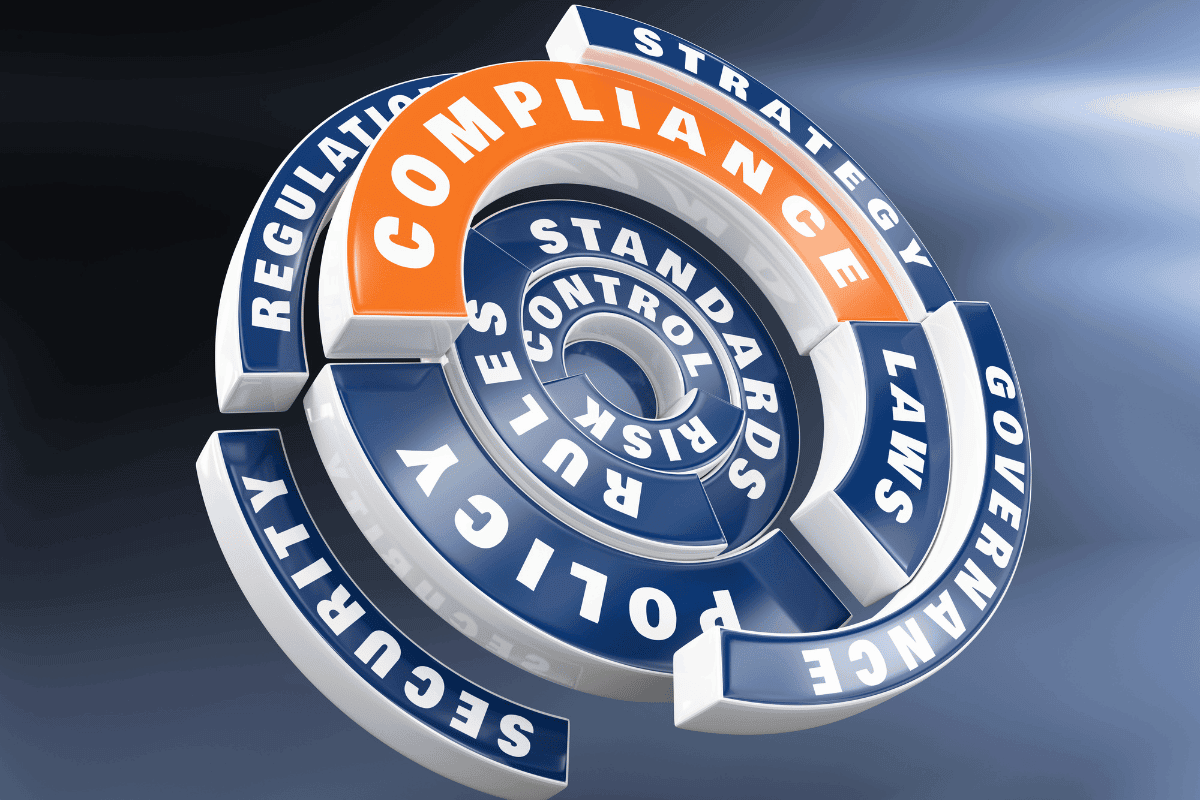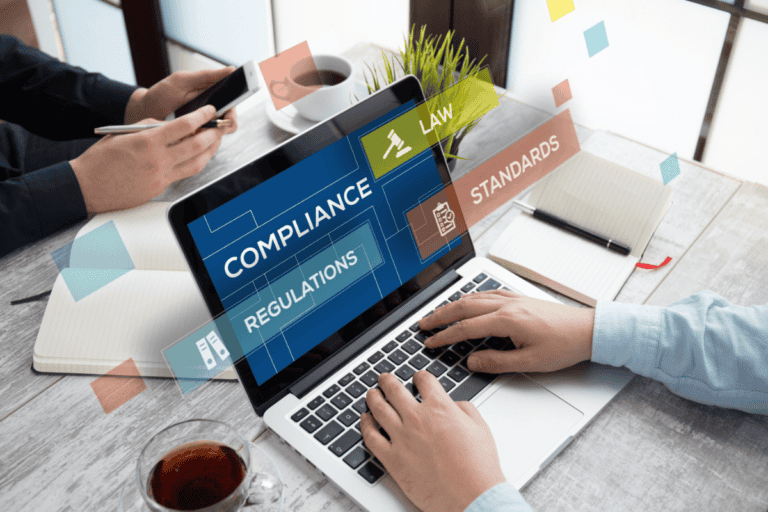Compliance Leadership and Governance
Building a Strong Foundation for Ethical Business Practices
In an increasingly complex and regulated business environment, the role of leadership and governance in ensuring compliance has never been more critical.
Effective compliance leadership and governance go beyond merely adhering to laws and regulations; they are about fostering an ethical culture, making informed and principled decisions, and maintaining robust oversight to safeguard the organization’s integrity and reputation.
This module delves into the key components of compliance leadership and governance, focusing on developing a strong compliance culture, the importance of ethical leadership, the role of boards and executives in compliance oversight, and the evaluation of compliance program effectiveness.
Developing a Strong Compliance Culture
A strong compliance culture is the cornerstone of any successful compliance program. It is the environment in which ethical behavior is encouraged and expected, where compliance with laws, regulations, and internal policies is ingrained in every aspect of the organization’s operations.
Understanding Compliance Culture
Compliance culture refers to the collective values, beliefs, and behaviors that determine how an organization approaches compliance and ethics. It is shaped by the organization’s leadership, policies, and communication, and it influences how employees perceive and respond to compliance requirements. A strong compliance culture is not just about avoiding legal penalties; it’s about fostering an environment where doing the right thing is the norm.
The impact of organizational culture on compliance cannot be overstated. A positive compliance culture can lead to higher levels of employee engagement, lower incidences of misconduct, and greater overall trust in the organization. Conversely, a weak compliance culture can result in widespread non-compliance, ethical breaches, and severe reputational damage.
Key Elements of a Strong Compliance Culture
Several key elements contribute to the development and maintenance of a strong compliance culture:
Leadership Commitment and Tone at the Top: Leadership plays a pivotal role in setting the tone for compliance. When leaders demonstrate a strong commitment to ethical behavior and compliance, it sets an example for the entire organization. This commitment should be evident in the actions and decisions of senior management, who must consistently prioritize compliance and model ethical behavior.
Clear Communication of Values, Policies, and Expectations: An organization must clearly articulate its values, compliance policies, and expectations to all employees. This includes regular communication about the importance of compliance and the specific behaviors that are expected. Clear communication helps ensure that everyone in the organization understands their role in maintaining compliance.
Employee Engagement and Participation: Employees are more likely to adhere to compliance standards when they feel engaged and involved in the process. Encouraging employee participation in compliance initiatives, such as training programs and feedback sessions, helps build a sense of ownership and accountability.
Continuous Education and Training: Ongoing education and training are critical to maintaining a strong compliance culture. Regular training sessions ensure that employees are aware of the latest compliance requirements and understand how to apply them in their daily work. Training should be tailored to different roles within the organization to address specific compliance risks.
Open Channels for Reporting and Addressing Compliance Concerns: Employees must feel comfortable reporting compliance concerns without fear of retaliation. Establishing anonymous reporting mechanisms, such as hotlines or online portals, can encourage employees to speak up when they encounter potential compliance issues. It’s equally important that the organization responds promptly and appropriately to any reports received.
Building and Sustaining a Compliance Culture
Building a compliance culture requires a deliberate and sustained effort. Leadership must be proactive in embedding compliance into every aspect of the organization’s operations. This includes integrating compliance goals into business strategies, performance evaluations, and reward systems.
Middle management plays a crucial role in reinforcing the compliance culture established by senior leadership. Managers must consistently communicate the importance of compliance to their teams and lead by example in their daily interactions.
Recognizing and rewarding compliant behavior is another effective way to reinforce a strong compliance culture. Employees who demonstrate a commitment to ethical behavior should be acknowledged and rewarded, as this encourages others to follow suit.
Finally, addressing non-compliance swiftly and effectively is essential to maintaining the integrity of the compliance culture. This involves not only disciplining those who violate compliance standards but also analyzing the root causes of non-compliance to prevent future occurrences.
Ethical Leadership and Decision-Making
Ethical leadership is the foundation upon which a strong compliance culture is built. Leaders who prioritize ethics in their decision-making processes create an environment where compliance is seen as integral to the organization’s success.
Principles of Ethical Leadership
Ethical leadership is guided by several core principles, including integrity, accountability, and transparency:
Integrity: Integrity involves doing the right thing, even when no one is watching. Ethical leaders consistently make decisions based on a strong moral compass, ensuring that their actions align with the organization’s values and ethical standards.
Accountability: Ethical leaders take responsibility for their actions and decisions. They hold themselves and others accountable for upholding the organization’s compliance and ethical standards. This includes being open to scrutiny and willing to admit mistakes when they occur.
Transparency: Transparency involves being open and honest in communication and decision-making. Ethical leaders ensure that information is shared with stakeholders in a clear and straightforward manner, fostering trust and credibility.
The Intersection of Ethics and Compliance
Ethics and compliance are closely intertwined. While compliance focuses on adhering to laws, regulations, and policies, ethics goes beyond this to encompass the moral principles that guide behavior. Ethical leadership supports and enhances compliance efforts by ensuring that decisions are not only legally compliant but also morally sound.
Ethical decision-making frameworks provide leaders with tools to navigate complex situations where the right course of action may not be immediately clear. These frameworks typically involve identifying the stakeholders affected by a decision, considering the potential consequences of different actions, and evaluating those actions against the organization’s values and ethical principles.
Ethical leadership is particularly crucial in times of crisis or when the organization is facing significant challenges. In these situations, the pressure to cut corners or prioritize short-term gains over long-term ethical considerations can be intense. Ethical leaders resist this pressure, ensuring that the organization remains true to its values and maintains the trust of its stakeholders.
Addressing Ethical Dilemmas
Ethical dilemmas arise when there are conflicting values or interests, making it difficult to determine the right course of action. In a business context, ethical dilemmas can occur in various areas, such as financial reporting, employee relations, or customer interactions.
When faced with an ethical dilemma, leaders should follow a structured decision-making process that involves:
Identifying the Ethical Issue: Clearly define the ethical issue or conflict. This involves understanding the values or principles that are in conflict and identifying the stakeholders affected by the decision.
Analyzing the Options: Evaluate the potential actions that could be taken to resolve the issue. Consider the legal implications, as well as the ethical impact of each option on the organization and its stakeholders.
Making a Decision: Choose the option that best aligns with the organization’s values and ethical principles, even if it may not be the easiest or most profitable choice.
Implementing the Decision: Take action based on the chosen option, ensuring that the decision is communicated clearly to all relevant stakeholders.
Reflecting on the Outcome: After the decision has been implemented, reflect on the outcome to assess whether it achieved the desired ethical and compliance objectives. Use this reflection to inform future decision-making.
Ethical leadership requires not only making the right decisions but also fostering an environment where others feel empowered to do the same. This involves creating a culture where employees are encouraged to speak up when they encounter ethical concerns and are supported in making ethical decisions.
Board and Executive-Level Compliance Oversight
Effective compliance oversight at the board and executive levels is essential for ensuring that an organization’s compliance program is robust and aligned with its strategic objectives. The board of directors and executive leadership play critical roles in setting the tone for compliance and providing the necessary oversight to ensure its effectiveness.
Governance Structures and Compliance
Corporate governance refers to the system by which an organization is directed and controlled. Governance structures establish the framework within which the board of directors and executive leadership operate, ensuring that the organization’s activities are aligned with its goals, values, and legal obligations.
A well-designed governance structure supports compliance by providing clear lines of responsibility and accountability. It ensures that compliance is integrated into the organization’s overall strategy and that there are adequate resources and processes in place to manage compliance risks.
Board Responsibilities in Compliance Oversight
The board of directors is ultimately responsible for overseeing the organization’s compliance program. This includes setting the tone at the top, establishing compliance policies, and ensuring that the organization has a comprehensive compliance strategy in place.
Key responsibilities of the board in compliance oversight include:
Setting the Tone at the Top: The board must establish and communicate a strong commitment to compliance and ethical behavior. This involves setting clear expectations for compliance and ensuring that these expectations are reflected in the organization’s policies and practices.
Reviewing and Approving the Compliance Strategy: The board should regularly review and approve the organization’s compliance strategy, ensuring that it is aligned with the organization’s goals and risk profile. This includes evaluating the adequacy of resources allocated to compliance and assessing the effectiveness of the compliance program.
Monitoring Compliance Performance: The board is responsible for monitoring the organization’s compliance performance, including reviewing reports from compliance officers and internal auditors. This monitoring helps the board identify any compliance issues and ensure that they are addressed promptly.
Ensuring Legal and Regulatory Compliance: The board must ensure that the organization complies with all relevant laws and regulations. This involves staying informed about changes in the regulatory environment and ensuring that the organization’s compliance program is updated accordingly.
Executive Leadership and Compliance
Executive leadership, including the CEO and senior management team, plays a crucial role in driving compliance initiatives and ensuring that they are effectively implemented throughout the organization. Executives are responsible for operationalizing the board’s compliance strategy and ensuring that compliance is integrated into the organization’s daily activities.
Collaboration between the board and executive leadership is essential for effective compliance oversight. While the board provides strategic direction and oversight, the executive team is responsible for executing the compliance strategy and reporting on its progress.
Transparency and accountability are key to successful compliance oversight. Executives must ensure that compliance reports are accurate, comprehensive, and delivered in a timely manner. This includes reporting any significant compliance issues or breaches to the board and taking prompt action to address them.
Effective Compliance Committees
Many organizations establish board-level compliance committees to focus specifically on compliance issues. These committees play a critical role in ensuring that the board’s compliance oversight responsibilities are fulfilled effectively.
Key functions of compliance committees include:
Overseeing Compliance Programs: The compliance committee is responsible for overseeing the organization’s compliance programs, including reviewing policies, monitoring compliance performance, and assessing the effectiveness of internal controls.
Ensuring Independence: Compliance committees must operate independently to provide objective oversight. This independence is crucial for ensuring that compliance issues are identified and addressed without bias or undue influence.
Providing Expertise: Members of the compliance committee should have expertise in relevant areas, such as legal, regulatory, and risk management. This expertise allows the committee to provide informed guidance and oversight.
Conducting Regular Reviews: The compliance committee should conduct regular reviews of the organization’s compliance program, including audits, risk assessments, and evaluations of compliance controls. These reviews help ensure that the program remains effective and responsive to changing risks.
Compliance Program Effectiveness Evaluation
Evaluating the effectiveness of a compliance program is critical for ensuring that it meets its objectives and continuously improves over time. A robust evaluation process provides insights into the program’s strengths and weaknesses and helps identify areas for enhancement.
Importance of Compliance Program Evaluation
Compliance program evaluation is not just a regulatory requirement; it is a best practice that helps organizations maintain a strong compliance posture. Regular evaluation allows organizations to assess whether their compliance programs are effectively mitigating risks, preventing misconduct, and promoting ethical behavior.
Evaluating compliance program effectiveness is also important for demonstrating to regulators, stakeholders, and the board that the organization takes compliance seriously and is committed to continuous improvement.
Key Metrics for Compliance Program Effectiveness
To evaluate a compliance program effectively, organizations must establish key metrics that provide measurable insights into the program’s performance. These metrics may include:
Incident Rates: Tracking the number and severity of compliance incidents, such as breaches, violations, or whistleblower reports, provides a clear indicator of the program’s effectiveness in preventing misconduct.
Audit Findings: Regular internal and external audits can reveal gaps in the compliance program and areas where controls may need to be strengthened. The results of these audits should be closely monitored and used to inform program improvements.
Employee Engagement and Training: Measuring employee participation in compliance training programs and their understanding of compliance policies is essential for evaluating the program’s impact on employee behavior.
Effectiveness of Internal Controls: Assessing the effectiveness of internal controls in detecting and preventing compliance issues is crucial for ensuring that the program is functioning as intended.
Tools and Methodologies for Evaluation
Organizations can use a variety of tools and methodologies to evaluate compliance program effectiveness, including:
Surveys: Employee surveys can provide valuable feedback on the effectiveness of compliance training, communication, and reporting mechanisms. Surveys can also help identify areas where employees may need additional support or clarification.
Audits: Compliance audits, conducted either internally or by external parties, provide an objective assessment of the program’s effectiveness. Audits can identify gaps in controls, weaknesses in procedures, and areas where the program may not be aligned with regulatory requirements.
Benchmarking: Comparing the organization’s compliance program against industry standards and best practices can help identify areas for improvement. Benchmarking provides a valuable perspective on how the program measures up to others in the same sector.
Data Analytics: Leveraging data analytics to monitor compliance-related data can provide insights into trends, patterns, and emerging risks. Analytics can also help identify potential issues before they escalate into significant problems.
Continuous Improvement of Compliance Programs
A key aspect of evaluating compliance program effectiveness is the commitment to continuous improvement. Organizations should use the results of evaluations to make informed decisions about how to enhance their programs.
This may involve updating policies and procedures, improving training programs, or implementing new technologies to support compliance efforts. It is also important to incorporate feedback from employees and stakeholders into the program’s evolution.
Continuous education and training are essential for maintaining an effective compliance program. As regulatory environments and business landscapes change, organizations must ensure that their employees are equipped with the knowledge and skills needed to navigate new challenges.
Conclusion
Compliance leadership and governance are critical components of any successful organization’s strategy. By developing a strong compliance culture, fostering ethical leadership, ensuring robust board and executive-level oversight, and continuously evaluating the effectiveness of compliance programs, organizations can safeguard their integrity and reputation in an increasingly complex regulatory landscape.
Ultimately, effective compliance leadership and governance require a commitment to doing the right thing, not just because it is required, but because it is integral to the organization’s long-term success. By embedding compliance and ethics into every aspect of the organization’s operations, leaders can build a foundation for sustainable, ethical business practices that inspire trust and confidence among all stakeholders.








